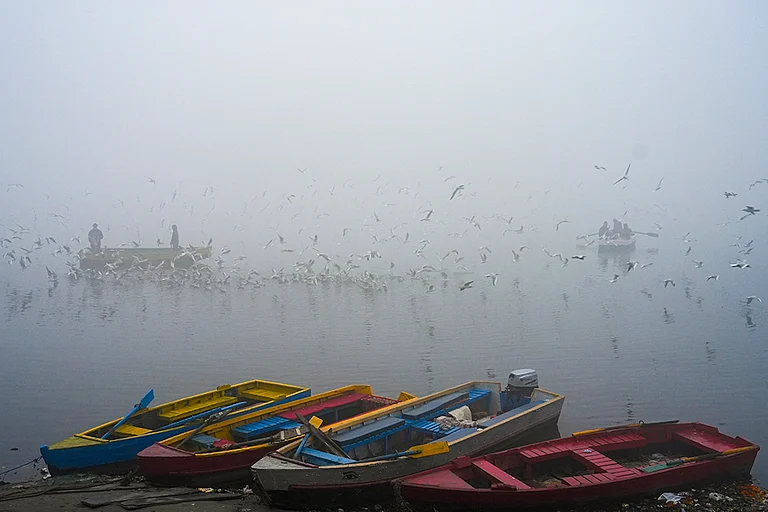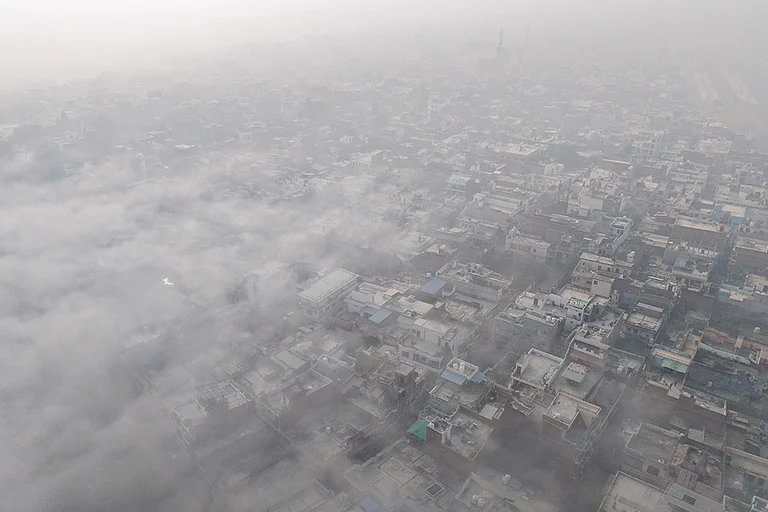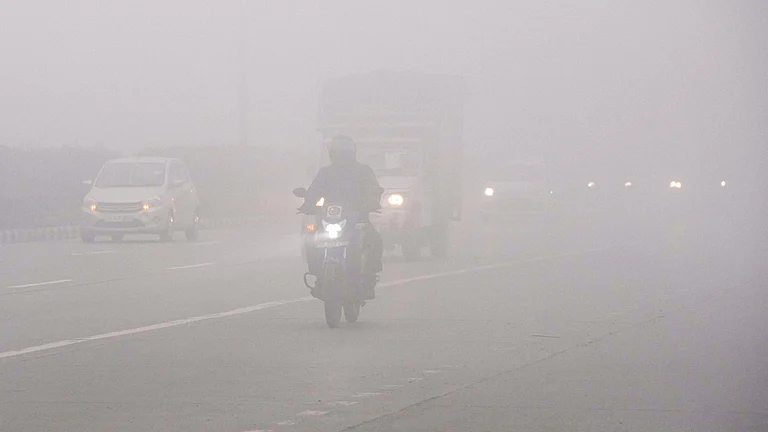The Lok Sabha elections are in full swing, and every party is trying to woo as many communities as possible. The Nishadas in North India are a visible but neglected community. In recent years, they have gained prominence in Bihar and Uttar Pradesh (UP). In both states, they have caste-based parties - the Vikassheel Insan Party (VIP) and the Nishad Party. Both parties are led primarily by Nishad leaders. With a wealth of social and cultural material, they claim to be the true inheritors of the Nishad identity. The VIP observed the martyr day of Phoolan Devi in Patna in July 2023. Similarly, Uttar Pradesh Minister and President of the Nishad Party, Dr. Sanjay Nishad, wrote a letter to the central and state government seeking a CBI probe into the murder of Phoolan Devi. Various small political groups are also mobilizing themselves around the charismatic personality of Phoolan Devi.
Phoolan Devi was married at the age of eleven. Enduring abuse, she was eventually forced to join a gang of dacoits. Accused in the 1981 Behmai killings, she surrendered in February 1983, in front of then Chief Minister of Madhya Pradesh, Arjun Singh in Bhind. Her surrender led to her spending eleven years in prison. The Samajwadi Party, under the leadership of Mulayam Singh Yadav, gave her a Lok Sabha ticket, and she won in 1996. She was serving as an MP when she was assassinated in 2001.
The Behmai massacre occurred in 1981, and there is still no definitive consensus on it. One side portrays Phoolan as a cruel bandit unworthy of respect, while the other sees her as a heroine and liberator. Two decades after Phoolan's death, during our fieldwork in Kanpur, Kanpur Dehat, Jalaun, and surrounding districts in 2021, we observed that Phoolan Devi's presence resides somewhere between myth and deity. Prior to that, I had been visiting Nishad settlements along the banks of the Ganga and Yamuna in U.P. for my research. I haven't found any Nishad settlement where she is not revered. Her life, entwined with truth and myths, began to transform into legends during her lifetime. After her death, it turned into a symbol of subaltern communities' assertion.
Phoolan Devi was born into a community that existed at the lowest rungs of society. Generally, Nishads made their living by rowing boats and fishing, but in Phoolan's case, her father eked out a living through odd jobs. He couldn't earn enough to provide a decent living for his daughters. In her autobiography "I, Phoolan Devi - The Autobiography of India’s Bandit Queen," Phoolan vividly recalls the anguish, sorrow, and deprivation of her childhood. She also remembers her father's helplessness and how her uncle terrorized her mother, father, Phoolan, and her sisters. After an abusive and violent marriage, men repeatedly punished Phoolan for being a woman.
After her death, Phoolan Devi is becoming a part of the political, cultural, and social memory repository of the Nishad community. A report published in 'Frontline' on August 18, 2001, after her death, reveals that she was quite popular among the fishermen community in Tamil Nadu as well. It would be a mistake to say that Phoolan Devi was only popular among the Nishad community. My fieldwork after 2022 indicates how she is perceived in remote areas of U.P. She was not only popular among the lowest strata of society in a traditional sense but also among women from higher classes. They speak of Phoolan Devi with admiration. During the 2022 assembly elections, in a hamlet in Raniya Vidhan Sabha in Kanpur Dehat, a woman from that community called another relatively young woman 'Phoolan' because she had made her husband, and the village head realize her position and had spoken to government officials in a clear voice. She was not afraid of anyone. It needs to be understood that Phoolan Devi's 'afterlife' has provided 'agency' to the women of North India. Similarly, a woman who used to run a small grocery shop is called Phoolan because of her courage and independence. This indicates being influenced by a personality and being included in the human pantheon.
An even more remarkable thing I have noted in eastern U.P. is when a section of upper-caste women praise the courage of Indira Gandhi, Mayawati, and Phoolan Devi. In the 'field,' there must have been dozens of instances when the women of these communities remembered Phoolan with respect. I have had long conversations with such women in Gonda, Ayodhya, Sultanpur, Allahabad, Bhadohi, Varanasi, Chandauli, Kanpur, Kanpur Dehat, Auraiya, Banda, Mahoba, Hamirpur, and Lalitpur, who were not part of subaltern groups but admired Phoolan Devi's life and struggles. They were a symbol of empowerment for them, challenging male dominance. It shows that there are many possibilities in Phoolan Devi's personality as a symbol and metaphor, and it will take time for society and mainstream politics to accept them.
Indeed, various communities seek refuge in history and memory simultaneously to struggle in their favor, to make them favorable. It is believed that Nishadraj Guha was so powerful that he helped Lord Rama. Along with the pride of this saga, they also narrate tales of suffering. Their talented young Eklavya had his thumb cut off, and Phoolan Devi had to face atrocities from upper-caste people. History and mythology merge in these tales, creating a very active 'Political society'. A political society is one where weaker sections strive for power through competition and bargaining, gradually gaining control. In the case of the Nishads, this gradual shift has now gained momentum. Partha Chatterjee discussed political society in the context of those shelter-seekers who were in search of their livelihood in Kolkata and its suburban areas. History had rendered them destitute.
Now, Phoolan Devi is emerging as a political and cultural icon among Bahujan communities of North India. In July 2021, the Vikasheel Insaan Party placed full-page advertisements in newspapers across UP to install statues of Phoolan Devi. The UP government halted the installation of these statues, stating that no necessary governmental approval had been obtained. Nonetheless, the Vikasheel Insaan Party succeeded in conveying the message that they intend to install statues of Phoolan Devi, although the BJP-led state government opposes it. It's worth noting that at that time, the Vikasheel Insaan Party was an ally of the BJP in Bihar and part of the state government there. Now, in 2024, the Vikasheel Insaan Party is supporting the INDIA alliance in Bihar. This directly suggests that various factions and leaders of the Nishad community are looking to advance their political maneuvering around the personality of Phoolan Devi.
In 2021, a statue of Phoolan Devi was supposed to be installed in Khandharipur village in Rae Bareli district. Once the pedestal was constructed, some 'unknown' individuals destroyed it. This incident is reminiscent of similar situations that occurred during the installation of Dr. B.R. Ambedkar's statues from the 1950s to the 1980s when his statues were vandalized in various parts of U.P. What I want to emphasize here is that in the near future, Phoolan is also likely to receive this honor, and political parties will be seen competing around it. In 2010, during the tenure of the BSP government in U.P., the Sheelu rape incident occurred in Banda district, leading to a case being filed in the special CBI court. The CBI subsequently filed charges of rape and assault against former BSP MLA Purushottam Naresh Dwivedi and four accomplices in Banda. Later, in 2015, the MLA was sentenced to ten years in prison. Then, in October-November 2011, in the Sangam area of Allahabad, a group of the Nishad community informed me during a formal conversation that atrocities were committed against their daughters, and they were forced to take arms. It is noteworthy that the state government took stern steps against the accused, but the presence of Phoolan Devi as a 'model' becomes significant on occasions when women also face brutal atrocities.
I am recalling an incident from August 2020. I was conducting fieldwork along the river Ganga in Chandali. A Nishad youth expressed his anguish to me: "Everything is not just about money. Humans also need respect." And then he added: "She was like Lakshmibai and Indira Gandhi for us. Because of her, people from various walks of life started coming to us to talk on the banks of rivers. If she wasn’t there, would you come to meet me here on the banks of this river? Because of her, strength came to the poor and boatmen living in villages, settlements, and ravines. Now no one can threaten us. No one can intimidate us."
Through the symbol of Phoolan Devi, the Nishad youth was reclaiming their dignity. Indeed, the transformation of Phoolan Devi's personality into an emblem of empowerment has instilled a sense of respect and empowerment among the Nishad people. Respect and empowerment help weak groups to become cohesive. When they become cohesive, they start appearing in public places and political arenas. Writing about Dalit politics in North India, Badri Narayan says that it has made many marginalized communities capable of gaining confidence, a sense of respect, political capability, and power. Now, this is visible in many places.


























